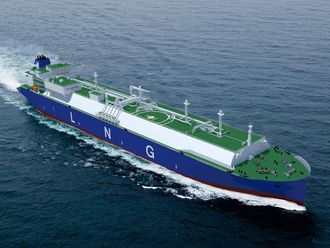The Organisation of Petroleum Exporting Countries (Opec) recently issued its annual World Oil Outlook and while the report may not please Opec producers, it might not overly displease them either.
Right at the beginning, Opec says “Ongoing geopolitical tensions, continuing excessive speculation in oil markets, a fragile financial and banking system, an anaemic economic recovery despite the extraordinary fiscal and monetary support, persistent high unemployment and social unrest in a number of countries have all made 2012 a challenging year for oil producers and consumers everywhere.” As most of these problems won’t go away easily or soon, they are, therefore, the background setting for the outlook Opec makes in the long term to 2035.
World economic growth forecast of 3.4 per cent is now lower by 1 per cent from last year’s report while population is expected to increase to 8.6 billion in 2035 from 6.9 billion in 2010. Oil prices are assumed to stay above $100 a barrel and reach $120 in nominal terms by 2025 and $155 in 2035 reflecting the cost of marginal barrels, inflation, the venture into high-cost regions and with current energy policies as they are.
Taking the above assumptions, Opec forecasts world primary energy demand to increase by 54 per cent at the rate of 1.8 per cent a year or from 232.2 million barrel of oil equivalent a day (mboed) in 2010 to 359.2 in 2035. While oil demand for energy is said to increase from 81 to 97.8mboed, it is surprising that it may be overtaken by coal at 102.9 and also gas is approaching fast at 94.8mboed. Needless to say that oil demand for energy use will be topped by non-energy uses such as but not limited to petrochemicals, as we shall see later.
Also surprisingly, Nuclear energy demand is said to increase from 14.3 to 21.6mboed in spite of widespread opposition in many countries. Opec believes that the main opposition is in some OECD countries and those programmes in China and India may go ahead.
Oil demand is forecast to grow from 87.8 million barrels a day (mbd) in 2011 to 107.3 in 2035 or 2.4mbd less than last year’s forecast, reflecting higher prices and technology advances in the transportation sector, the main consumer of oil.
Gone are the days when Opec and others forecasted more than 120mbd even for the year 2020. Oil demand in the OECD region will continue to slide from 46.3 to 41.1mbd in the period under consideration though this will be more than compensated by growth in the developing countries from 36.6 to 60.6mbd. Alarming growth is forecast for Opec countries from 8.3 to 12mbd which may bring some policy response in some countries to conserve energy and to preserve their export markets.
With oil reserves increasing and other liquid streams increasing, Opec does not see any problem in meeting the demand. Non-Opec supplies of oil and natural gas liquids (NGL) are expected to increase from 52.4mbd in 2011 to 62.7mbd in 2035. The increase is mainly due to non-conventional oil (shale oil and oil sands) in North America and production increases in the developing countries and Eurasia. As gas production increases, NGLs follow suit as well. Therefore, what is left for Opec is an increase of oil supplies from 35.2mbd in 2011 to 44.9mbd in 2035. A warning here is in order. Most of the Opec increase will be taken by NGLs and Opec crude oil production is likely to increase from 29.8 to 34.9mbd only. Countries which are investing heavily to increase capacity must be made aware of this unwelcome result and Opec in general must avoid the creation of high surplus capacity with its undue pressure on oil prices.
With all the uncertainties in the world with respect to economic growth, energy policies and geostrategic developments, the above outcome cannot be assumed to be the one and only. Therefore, Opec says if the economic situation worsens, demand in 2035 may fall to 98mbd and Opec crude call to 25.8 mbd. On the contrary, if economic growth turns out to be higher, demand in 2035 may rise substantially to 116.4mbd and the call on Opec to 43.7mbd. Then there is another case, which Opec calls “liquid supply surge” where higher prices lead to higher non-Opec supply and more shale oil and NGL production in the US, the call on Opec crude in 2035 could fall to 25.9mbd. These extreme situations may not happen but countries must be prudent and watch out for developments and move gradually. Obviously, such eventualities will solicit action by Opec to maintain price stability.
With all the risks involved, the report rightly “calls for serious monitoring of future developments in the energy scene and to remain alert to various possible outcomes.” Let us hope this will be the case.
— The writer is the former head of the Energy Studies Department in the Opec Secretariat in Vienna.












